Motorcycling today is a study in contrasts. (We cribbed that from an eighth-grade filmstrip on Brazil, in case you’re wondering.) Okay, that’s trite, but it is true. Over the last few weeks, as we gathered our editorial wits to look back on a year of new, not-so-new, and egregiously old hardware tossed into the miasma of retail sales and foisted upon us at press launches prominently featuring egg-salad sandwiches and Kirkland sodas, the bifurcation of the market has become clear. Power at the top, movement at the bottom, not much in between. Signs, as they say, of the times.
Low-cost motorcycles continued to do well in 2013. Early returns on Honda's latest round of high-value bikes suggest that Big Red hit the target with the CB500s and the CBR250R. Its new-think NC700X has also done fine, even as sales of hard-core sportbikes continue to languish. We hear rumors of even more machines coming our way that makers hope will balance on the razor-thin price/performance fulcrum. Those who predict such things are convinced that growth and credibility at the economy end of the scale makes up the best and most sustainable path to a full recovery for the motorcycle industry.
But high-end machines, usually from Europe, continue to find buyers with the affluence to make payments manageable or even unnecessary. In that category, perhaps none is growing as rapidly or as prominently as the adventure-touring (ADV) segment. These outsized "dirtbikes" have become the modern equivalent of "everybike," put to use as touring machines, errand runners, canyon-strafing toys, and even, dare we suggest this, off-road vehicles. What the Triumph Scrambler or DT-1 did for your fathers and grandfathers, the BMW GS is doing today. The Europeans own this segment now, but it won't be long before they have some competition.
Our Motorcycle of the Year, revealed with an easy and no-obligation flip of this page, reflects the strength of a relatively new market segment and highlights one manufacturer's final stage of gestation from purveyor of stodgy old machines for stodgy old riders to a technologically savvy world leader. Scattered among the pages that follow are even more standout motorcycles in categories as diverse as Best Touring Bike, Best Naked Bike, even Best Bang for the Buck, each making its own strong statement about both the state of the motorcycle market and the state of the art. We've also highlighted another Motorcyclist of the Year, remembering it's more than just machines making up this sport that we love. Even if motorcycling seems more divided than ever before, striking out in newer—and newly rediscovered—directions, we still each find our place in it. Spend some time in the next few pages and see where you find yours.
BMW didn't need to update the** R1200GS** for 2013. In fact, many GS junkies probably wished the company wouldn't. The GS was already BMW's best-selling model, representing more than 30 percent of the firm's total annual sales, and it was widely regarded as the best bike in the wildly popular adventure-touring class. BMW had nothing to gain and everything to lose by fiddling with the GS. An ill-conceived or poorly executed update could easily compromise everything the GS had achieved—especially alongside aggressive competition from Ducati and an insurgent KTM. But BMW today is not the same conservative, tradition-bound company it was back in 2004, the last time the big GS benefitted from a major overhaul. The German manufacturer is no longer content to rest on its two-wheeled laurels, no matter how successful those might be. The same relentless pursuit of mechanical perfection that resulted in the stunning K1600GT and HP4 (flip forward and peep "Best Touring Bike" and "Best Sportbike" winners) has now been applied wholesale to the original adventure tourer, the bike, one could argue, that started all this ADV madness 32 years ago—and with brilliant results.
Nothing was sacred when it came time for BMW to revamp its flagship—not even the signature Boxer-twin engine that turned 90 this year. Now water-cooled for the first time, this is the smoothest, most powerful, most satisfying Boxer yet. The steel-trellis chassis is likewise all new, with revised geometry and "EVO" iterations of the patented Telelever and Paralever front and rear suspension systems, for handling that is both sharper and more stable than before. The advanced electronic systems that already incorporated electronic suspension adjustment, traction control, ABS, and more, have been upgraded with four switchable ride modes and auto-adjusting Dynamic Damping Control lifted from the revolutionary HP4. Everything BMW knows about building great motorcycles has been incorporated into this bike.
It's one thing to throw technology at a motorcycle—every company active in the ADV segment does that. It's something entirely different to build a cutting-edge motorcycle that works as cohesively as the new GS does. When we attend a BMW press launch, the thing that most impresses us is that everyone on staff, from the chassis engineer to the electronics programmers to the design chief, rides—and rides really well. You can tell immediately that the new GS (like the K1600GT and the HP4) is built by people who love to ride and who know exactly how a proper motorcycle should work. More than anything, this is what makes the current crop of BMWs great. And the GS, which is equally at home on an American interstate, an Alpine pass, or a cinder-covered singletrack, is by our reckoning the best of the bunch.
The R1200GS is the quintessential Motorcycle of the Year: a benchmark bike that continues to define and lead its class; a shining example of the cutting edge of motorcycle technology; a clear statement of the strength, power, and vision of the manufacturer that built it; and, most importantly, a damn good—make that great—bike. BMW took an enormous risk in revamping the GS from the ground up, a risk that really paid off.
It might feel like old news now, but at this time last year, very few people outside of the Moto2 circle even knew the name Marc Marquez. If the then-teenager's name came up at all, it was usually in the form of a muted muttering about some rule-bending conspiracy between Spanish-based Dorna (MotoGP's sanctioning body) and Spanish-based series sponsor Repsol to put Spanish-born GP rookie Marquez on a factory MotoGP machine—a three-way match made in Iberian heaven. When all was said and done, the so-called "rookie rule" was lifted and Marquez eventually entered MotoGP astride Casey Stoner's factory Honda RC213V, resplendent in its Repsol livery. Wielding Excalibur placed great expectations on the Prince of MotoGP, regardless of Honda's gentle words about 2013 being a "learning year" for Marquez. But when the 20-year-old Marquez dazzled the MotoGP paddock at his official debut during preseason testing at Sepang, Malaysia, ending the session just 0.044 seconds off the leader's pace, he conclusively proved that it wasn't just nepotism that got him on the MotoGP grid. There was serious talent backing up serious hype.
After a podium finish in his first MotoGP race in Doha, Qatar, Marquez traveled to Circuit Of The Americas in Austin, Texas, and broke not one but two of Freddie Spencer's Grand Prix records, becoming the youngest in history to both start from pole and to win a race. At press time, he led the World Championship and had only missed the podium once in 2013.
Achieving all of this in less than 12 months in the MotoGP big league has fans and journalists alike percolating with excitement, but it's not just his fearless, elbow-dragging riding style that has Marquez winning hearts. He's got a good sense of humor, too. When we asked Marquez during preseason testing at Austin if he had any superstitions, he replied thoughtfully, "No, just, in practice I use blue underpants, and in the race, red underpants!"
Thus far Marquez has faced superstardom with the same beaming smile and jovial, adolescent spirit that can only come from a true love of the sport. His attitude gloriously defies the mold of the stone-faced champion whose brilliant riding is followed by a podium celebration with all of the enthusiasm of a fence post.
Marc Marquez has reinvigorated the fans' interest in the MotoGP series in a way not seen since the rise of Valentino Rossi. Indeed, Rossi himself has referred to Marquez as a newer model of himself. High praise and, as far as we can tell, well deserved.
On paper, BMW's HP4 resembles any other liter-class superbike: the same 999cc, 16-valve inline-four, the same twin-spar aluminum frame, an industry-standard USD fork and rear monoshock, and four-piston, radial-mount brakes. An utterly conventional, by-the-numbers sportbike, built by a company that's usually anything but.
Then you pull the trigger. With a dyno-verified 177.5 bhp (and launch control) delivering consistent, 9.8-second quarter-mile passes at more than 150 mph, the HP4 outsprints even a 1,400cc Kawasaki ZX-14R. Supernaturally composed Dynamic Damping Control—with electromagnetic suspension valves that self-adjust up to 100 times per second—makes the HP4 feels more stable than any sportbike we've ridden before. And those brakes… The strongest stoppers on any production bike, assisted by infallible Race ABS, are the most predictable, too.
Sure, it's $24,995, and unless it's already in your garage, there's no way you're getting one. But the HP4 is one very special sportbike, with performance that utterly transcends its spec sheet. If you are ever lucky enough to ride one, you'll understand why it won our Class of 2013 sportbike comparison—as well as our sportbike of the year.
With three cylinders, odd displacement, and chassis dimensions more akin to a 250GP racer than a middleweight sportbike, the Daytona 675 creates its own category. The crazy-charismatic D675 has been a staff favorite since it was named MOTY in 2006, and this year's totally revised version, with more power, better chassis balance, and less weight, is the best yet.
Naked bikes are all about attitude, and Aprilia's Tuono V4R radiates the stuff. It's based on the RSV4, but Aprilia didn't just strip the bodywork off its Superbike—it retuned the engine and reconfigured the chassis and riding position to yield a more comfortable and practical machine. It's equally at home on a back road or on city streets and, unless you live at a racetrack, the Tuono is the best way to enjoy Aprilia's incredible V-four engine.
There's not much that can compare to the gruff, angry noise that emanates from the Tuono when you twist the throttle. And the V4R bites as viciously as it barks, with a top-end rush of 145 horsepower to match the stupendous torque. Thank goodness, then, for the Aprilia Performance Ride Control (APRC) package, which offers eight-level traction control, variable engine modes, a quickshifter, wheelie control, and launch control, too.
This year, it's a great bargain, too. Aggressive price cuts list the Tuono V4R APRC at $13,999—the same cost as some Japanese literbikes but with loads more character and the practicality a naked bike promises. This is a sophisticated yet frighteningly raw machine—and one that consistently makes every member of our staff laugh inside his helmet.
Triumph’s Speed Triple gets better every year, and the 2013 version, with a 120-horsepower triple ready to wheelie in almost any gear, is the best incarnation yet. A balanced, thrilling, and engaging do-it-all machine, Triumph’s original Speed Triple remains one of our all-time favorite bikes, regardless of category.
We're fully expecting a barrage of bitching and a cartload of cavil for picking, once again, the mighty BMW K1600GT as our favorite touring bike. We hear you. Yes, it is fantastically expensive. Yes, it has more plastic than a MasterCard factory. And, yes, it can make you feel like noob in a wet parking lot.
But, but…but. Twist the dial on the 1649cc inline-six, listen to the F1-inspired wail, feel the thrust of more than 100 pound-feet of torque driving 756 pounds of machine forward, and you will start thinking of spaghetti dinners and dropping cable service to swing the payments. And when you're done playing racer boy with all the unsuspecting sportbike riders in your neighborhood, revel in the BMW's incredible comfort, brought in part by the six's eerily smooth nature, superb ergonomics (way better than the GT-L), and sublime aerodynamics.
Add to all that a host of features—available satellite navigation, a great stereo, standard cruise control, highly functional hard luggage, heated seats and grips potent enough you could use them for campside mealmaking—on top of traction control, a steerable headlight, electronically adjustable suspension, and superb brakes with ABS. The K16 is the complete package: superbly built, cleverly engineered, and unexpectedly joyous to ride.
With new ride-by-wire electronics, cruise control, and a few other tweaks, the venerable FJR returns to our attention for a variety of reasons. But the big one is that it isn't. Big, that is. The FJR feels like a motorcycle. Most of us find the FJR's size just about perfect for long-distance travel. It's very comfortable, reasonably fast, and a great value.
KTM's big-bore Adventure has long been the best bike for adventuring off the beaten path, but until now, its road-going capabilities have left something to be desired. All that dirtbike DNA made a motorcycle that excelled off pavement, but it lacked the luxury and technology you really appreciate after that eighth hour in the saddle.
That's no longer the case now that KTM has given the capital-A adventure bike its first comprehensive overhaul since 2006, greatly enhancing its road-worthiness without sacrificing any inherent off-road ability. A larger-displacement, 1,195cc, V-twin adapted from the RC8R superbike adds 30 percent more power, while a comprehensive electronic operating system—including switchable ride modes, four levels of traction control, combined ABS, and optional electronic suspension—puts the Adventure on-level with sophisticated competition from BMW and Ducati. It all works well, too.
Despite these changes, the Adventure still feels like a steroidal dirtbike, with an in-command riding posture equally suited for roosting berms or swerving around double-parked Priuses. This is an update done right, extending the Adventure's outright capability without compromising its existing ability.
The Multi is the most versatile Ducati, combining the Testastretta engine and self-adjusting Skyhook suspension with the most comfortable and capable chassis. It's too raw to be everyone's ADV, but if you're a recovering sportbike addict wanting to comfortably rip back roads, the Multistrada is your bike.
Thrills Honda's tactic for reigniting motorcycling might just boil down to "give more for less." Few of the truly new models from Big Red this year are technological groundbreakers or intended to make the multi-bike owner crack open his wallet to expand the fleet. Nope. Honda's put a laser sight on new riders, reentry riders, and even those who never thought they'd ever be motorcyclists. And hit the mark dead on.
A prime example is the new CRF250L. Built in Thailand and sold for a mere $4,699, Honda's latest dual-sport rises well above its station. Sure, it's not powerful. And, yes, the overall equipment specification suggests a machine that's less than race ready. But it undercuts fellow Japanese 250 dual-sports by at least $400, which goes some way toward riding gear and insurance for the newbies.
Freshly minted riders aren't the only ones likely to be pleased. The CRF is competent and cheerful, a bike that makes experienced riders grin and novices feel like they will be able to learn the ropes without getting hurt. It is just capable enough, just flexible enough, and just well enough developed that it feels like an entirely new and hugely welcome member of the dual-sport fraternity. It's a perfect playbike, with license plates.
A moment of silence, please, for Husky's likable and flexible TR650 Terra. It will not continue into Husky's new ownership in the Pierer Group. And that's a shame. The Kymco-built, liquid-cooled engine is strong and smooth, and the chassis a good combination of on-road comfort and trail-ready capability. Let's hope someone reprises the idea behind the Terra.
Few motorcycles have inspired as many two-wheeled dreams—for motorcyclists and non-motorcyclists alike—as the Indian Scout streamliner built by New Zealand's Burt Munro, celebrated in the beloved 2005 motion picture, The World's Fastest Indian. Munro's wobbly contraption went over 200 mph in 1967 and still animates two-wheeled enthusiasts of all allegiances today.
It was a stroke of genius, then, when the brain trust behind the newly revived Indian Motorcycles commissioned a modern "Munro Special" to debut the Thunder Stroke 111 V-twin—the first new Indian engine in 60 years. And this wasn't just some dummy display piece, but an all-metal, fully operational, rolling sculpture that was painstakingly hand formed by Jeb Scolman, one of the nation's finest hot-rod builders. The resulting "Spirit of Munro" is breathtaking—truly one of the most beautiful motorcycles ever built.
To credibly compete with Harley-Davidson, Indian needs more than just good motorcycles. It needs a mythology that engages and inspires a new generation of enthusiasts dreaming of Indians. Channeling the spirit of Burt Munro and the countless others who raced Indians on all surfaces over the past century does exactly that.
Richard Pollock’s artfully rendered street-trackers are sublime mash-ups of classic forms and up-to-the-minute technology, all built with an attention to detail befitting an aerospace engineer (Pollock’s past life). No tacky bolt-ons or garish frame paint here, just top-notch components finished in a classic color scheme, to create totally functional dreambikes.
We sometimes forget that not everyone is into motorcycling for an adrenaline-pumping thrill ride. For some, transportation is the main goal. Others are just happy to be outside. We get it. And so does Honda. The evidence is right here: the new world-spec CB500s. In truth, all three models we get here—the CBR500R sportbike, the CB500X adventure-styled machine, and the CB500F naked—are good values in totally middle-ground motorcycles, offering a lot of confidence and competence for around $6,000.
But it's the CB500F we're most fond of, in part because it's the cheapest version of these mechanically identical (or nearly so) machines. Just $5,499 gets you in the sport with a sprightly, economical, unusually smooth parallel-twin powerplant housed in a steel-member frame that looks like nothing special on the spec chart.
With mellow power, roomy ergonomics, and suspension calibrated toward the pillowy end of the scale, the CB-F aims for and solidly hits the broadest part of the new/returning-rider market. Well-built, charming, and inoffensive, the CB500F is in many ways the prototypical Honda—offering a safe, intelligent choice for those new to our sport, or even those coming back after a few years away.
What's this? The high-spec Street Triple R lands in the Bang for the Buck category? Triumph's uprated Street is so much better than the base model, for so little extra dough ($9,999, just $600 more) that we have to call this money well spent. Upgraded and adjustable suspension and much better brakes improve an already-agile, fast, and enjoyable machine.
When our Guzzi-loving staffers started cooing about the latest machine from Mandello del Lario, no one was surprised. It's what these guys do: defend old-tech machines by bridging the conversation from clanky machinery to unique engine architecture, significant historical precedent, the serenity of Lake Como, or some other specious attribute meant to make us look past obvious flaws.
Imagine our surprise when those not infected with Guzzi delirium returned to the office and issued forth unprompted praise for the new California. "The electronics work. The brakes work. It shifts like a modern engine. It's even—am I really saying this?—fast…" The skeptic's voice trails off, realizing that he might have a rare form of glossolalia.
But he doesn't. The California is really that good, that competent, that unexpected from a company that has struggled to break free of its own history. Say what you want of the styling—some of us were lukewarm but most feel that the Galluzzi-penned form is a welcome break from the cruiser norm—it's what you find under the skin that most pleases. Modern performance, slightly outlandish style, and uncannily good integration of high technology into classical forms highlight Moto Guzzi's best effort to date.
Go ahead. Call the Bolt a "Sportster knockoff." We're calling BS. In person, the Bolt is handsome and it works well. The 942cc, air-cooled engine spins out a rainbow-scented river of torque; it starts, stops, and steers like a thoroughly modern motorcycle. It'll probably never break, spit hardware into the curb, or leak. Think of it as a $7,990 ticket to freedom.
Last year, electronically adjustable suspension was enough to impress us, but not anymore. This year brought the introduction of dynamically adjustable suspension, so now every Tom, Dick, and motojournalist's damping is computer-controlled and alters itself as we race down the road. BMWs Dynamic Damping Control (DDC) system reacts to road conditions and riding inputs in as little as 10 milliseconds. What that means is that when you ride a DDC-equipped R1200GS or HP4, the damping adjustment changes as much as 100 times every second. Sachs' "Skyhook" system, introduced on this year's Ducati Multistrada 1200S, works similarly. Both systems have us smitten.
The technology is interesting, but the reality of what the systems allow manufacturers to do with motorcycle design is incredible—and we've only seen the beginning. In the case of the Multistrada, dynamic suspension transforms a scalpel-sharp canyon carver into a pillow-plush commuter with the flick of a thumb. The hardware will likely remain expensive for the foreseeable future, but research and development of the software will no doubt spread to other companies and models, making the possibilities almost endless.
Single-minded. That's the phrase that describes Honda's NC700 engine. In order to average nearly 60 mpg, the 670cc, four-valve-per-cylinder engine keeps the revs down and velocities up, thanks to tiny ports, mild cams, and a single throttle body that would choke the average 600cc supersport. Charismatic? No. Efficient? Virtually without peer.
"I have to deal with people all day long. Why would I want someone yammering in my helmet while I ride?" That's the most common argument against bike-to-bike communicators. Fine, but let us offer some of the pros: There's convenience (no more hand signals); safety (this corner is dirty, you're clear to pass); and enjoyment (via casual conversation with your riding partners or listening to music). Hearing is believing, and after trying headsets ourselves during road tests and staff tours, we're all converts. Even Editor in Chief Marc Cook, who supplied the quote above, now regularly rocks a headset on his helmet.
Motorcycle-specific communication systems have been around for more than a decade, but they have improved dramatically. Over the past few years, we've watched communicators evolve from clunky, cumbersome helmet anchors to sleek, lightweight, and highly functional devices that allow you to speak freely with your riding partners, stream music, listen to GPS navigation, answer phone calls, and more. This total connectivity might sound like the antithesis of what you want during a ride, but experience shows that communicators can genuinely improve your riding experience. Try one and see for yourself.
Like bike-to-bike communicators, action cameras have become really good. The irrefutable leader in the category is GoPro, and that company’s Hero 3 is now smaller, lighter, and easier to use thanks to an optional Wi-Fi remote control and app that lets you manage the camera from you smartphone, transporting you from zero to Hero in no time.














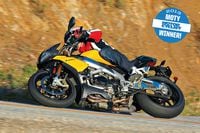
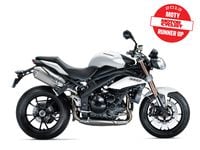

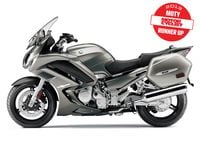







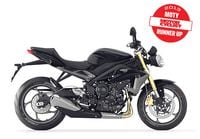




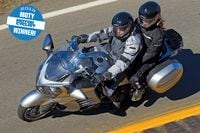

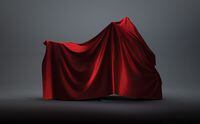

/cloudfront-us-east-1.images.arcpublishing.com/octane/G4MG6OUCJNBSHIS2MVVOTPX65E.jpg)
/cloudfront-us-east-1.images.arcpublishing.com/octane/IIGGWFOTOJGB7DB6DGBXCCMTDY.jpg)
/cloudfront-us-east-1.images.arcpublishing.com/octane/QSTCM6AVEZA5JJBUXNIQ3DSOF4.jpg)
/cloudfront-us-east-1.images.arcpublishing.com/octane/U4I7G625B5DMLF2DVIJDFZVV6M.jpg)
/cloudfront-us-east-1.images.arcpublishing.com/octane/B6XD6LS6IVCQPIU6HXDJSM3FHY.jpg)
/cloudfront-us-east-1.images.arcpublishing.com/octane/ICL63FEDDRDTTMINYICCEYGMDA.jpg)
/cloudfront-us-east-1.images.arcpublishing.com/octane/FCGZHQXRBZFLBAPC5SDIQLVF4I.jpg)
/cloudfront-us-east-1.images.arcpublishing.com/octane/WNOB6LDOIFFHJKPSVIWDYUGOPM.jpg)

/cloudfront-us-east-1.images.arcpublishing.com/octane/X33NU3E525ECRHXLNUJN2FTRKI.jpg)
/cloudfront-us-east-1.images.arcpublishing.com/octane/6KKT5NNL2JAVBOXMZYS5ZO76YA.jpg)
/cloudfront-us-east-1.images.arcpublishing.com/octane/J5RKG5O455GMPGQRF2OG6LRT7A.jpg)
/cloudfront-us-east-1.images.arcpublishing.com/octane/GX2CIZKQVRH2TATDM26KFG2DAE.jpg)
/cloudfront-us-east-1.images.arcpublishing.com/octane/ZWIDYSAKQZHD5BHREMQILXJCGM.jpg)
/cloudfront-us-east-1.images.arcpublishing.com/octane/CYUHJZCTSJCH3MRAQEIKXK7SCQ.jpg)
/cloudfront-us-east-1.images.arcpublishing.com/octane/LKOFINY56FCXJCANJ5M7ZDQUBY.jpg)
/cloudfront-us-east-1.images.arcpublishing.com/octane/4NBPDACMWJH63JQYJVK3QRBDZI.jpg)
/cloudfront-us-east-1.images.arcpublishing.com/octane/KKHQHRR3FJGX7H2IPU6RALMWG4.jpg)

/cloudfront-us-east-1.images.arcpublishing.com/octane/5IOFS5JAE5FOXMNA23ZRAVVYUU.jpg)
/cloudfront-us-east-1.images.arcpublishing.com/octane/CGXQ3O2VVJF7PGTYR3QICTLDLM.jpg)

/cloudfront-us-east-1.images.arcpublishing.com/octane/OQVCJOABCFC5NBEF2KIGRCV3XA.jpg)
/cloudfront-us-east-1.images.arcpublishing.com/octane/OPVQ7R4EFNCLRDPSQT4FBZCS2A.jpg)